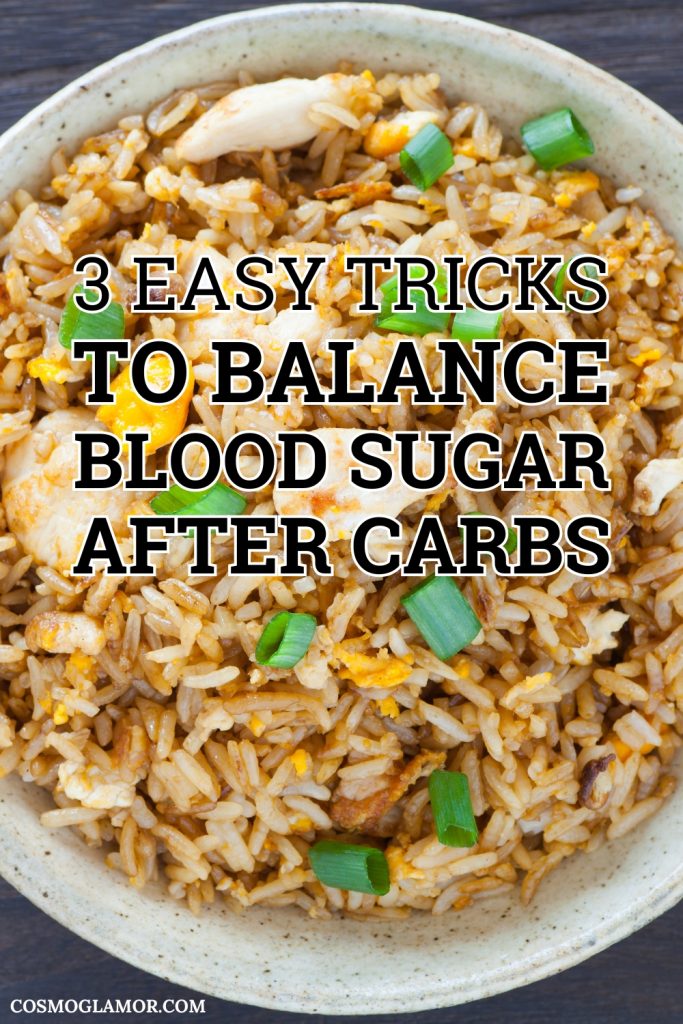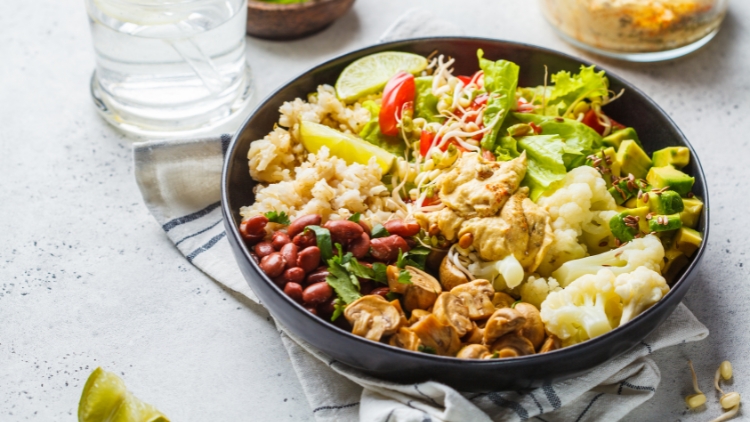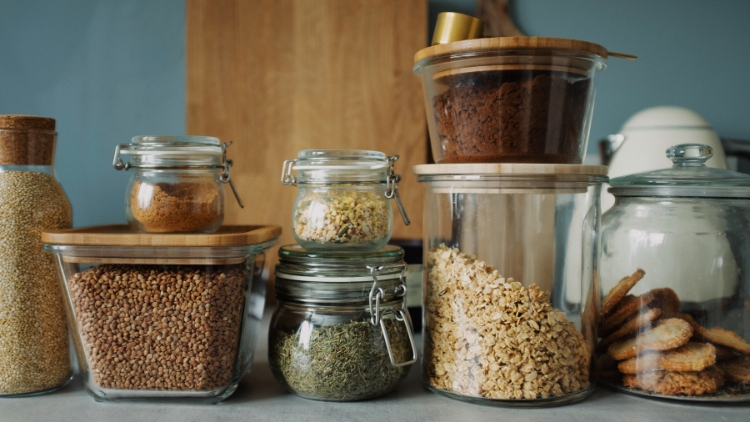Let’s talk about carbohydrates. We enjoy them, don’t we? Pasta, bread, that tempting pastry with your afternoon coffee… But sometimes, an hour or so later, you might experience that familiar energy crash. You know the feeling – where concentration becomes difficult, energy levels plummet, and a nap suddenly seems essential. That, often, is the blood sugar rollercoaster taking a dip after a significant spike.
This isn’t just about temporary sluggishness. Consistently high blood sugar levels after meals (known medically as postprandial hyperglycemia) can, over time, contribute to more serious health issues like heart disease or kidney problems. While glucose from carbs is our primary fuel, the goal is a steady, sustained release, not a sudden surge followed by a crash.
Before you consider eliminating bread entirely (let’s not be hasty!), I’ve found a few surprisingly straightforward techniques that have genuinely helped me feel more balanced after enjoying carb-rich foods. These aren’t drastic diets or complicated protocols, just manageable adjustments. Sustainable changes are usually the ones that stick, after all.
Trick #1: The Buddy System for Carbs (Protein, Fiber & Fat)

Think of carbohydrates as needing some companions to moderate their effect. When consumed alone, especially simple or refined carbs, they break down very quickly, potentially flooding your bloodstream with sugar and resulting in a sharp spike.
However, pairing those carbs with protein, fiber, and healthy fats changes the dynamic. These “buddies” digest more slowly, which slows down the overall absorption of glucose from the carbohydrates. The outcome? A more gradual rise in blood sugar, avoiding those dramatic peaks and subsequent crashes.
- Fiber: Acts like a regulator in your digestive system. It isn’t digested itself but forms a gel-like substance that slows the absorption of sugars. Find it abundantly in whole grains (oats, quinoa, brown rice, whole-wheat bread), vegetables (especially leafy greens, broccoli, beans, lentils), fruits (berries, apples – eat the whole fruit for maximum benefit), nuts, and seeds.
- Protein: Takes considerable time to digest (often 3-4 hours), slowing stomach emptying and the release of glucose into the bloodstream. Include good sources like chicken, fish, eggs, Greek yogurt, tofu, lentils, nuts, and seeds. Aiming for a portion of protein roughly similar in size to your carbohydrate portion can be a helpful guideline.
- Healthy Fats: Also contribute significantly to slowing digestion. Focus on unsaturated fats found in avocados, nuts, seeds (like chia and flax), and olive oil. As a bonus, these fats support heart health.
What does this look like in practice? Instead of plain toast, opt for whole-grain toast (carb/fiber) with mashed avocado (fat) and a scrambled egg (protein). Instead of just fruit, pair apple slices (carb/fiber) with almond butter (protein/fat). It’s about creating combinations.
Trick #2: Strategic Timing (Meal Order & Spacing)

This might sound slightly unconventional, but when you eat and in what sequence can influence your blood sugar response.
Firstly, try maintaining a consistent meal schedule. Skipping meals, particularly breakfast (something I still struggle with occasionally!), can sometimes lead to more pronounced blood sugar spikes later in the day. Aiming for roughly 3-4 hours between meals generally allows your blood sugar levels time to return to baseline before your next intake.
Regarding the order of food: research suggests that consuming vegetables and protein before eating simple carbohydrates (like white rice or potatoes) can result in measurably lower post-meal glucose and insulin levels. The rationale is that the fiber from the vegetables provides an initial buffer, while the protein and fats begin their slower digestion process. By the time the simple carbs are consumed, the digestive environment is less conducive to rapid sugar absorption.
This can be as simple as starting your meal with a salad or eating your protein and non-starchy vegetables before moving on to the rice or bread. It might feel a bit deliberate at first, but if it helps mitigate that afternoon slump, it’s worth considering. Also, try eating more slowly. Savoring your food allows your body more time to process and potentially helps with recognizing fullness cues.
Trick #3: A Gentle Post-Meal Stroll (Light Activity)

This is a highly effective strategy requiring minimal exertion. Remember that glucose is fuel for your muscles. Engaging in light physical activity after eating encourages your muscles to uptake glucose directly from the bloodstream for energy, naturally helping to lower blood sugar levels.
We’re not talking about intense exercise here. A simple 10-15 minute walk after lunch or dinner can be highly beneficial. When I first started doing this instead of heading straight for the couch after a substantial meal, I was pleasantly surprised by how much more stable my energy felt afterwards. It’s become a regular part of my routine. Even light housework, gardening, or simply standing and moving around for a few minutes after eating counts.
A Few Extra Considerations
While those are the main pillars, a few other habits support overall balance:
- Stay Hydrated: Water is fundamental for countless bodily processes, including blood sugar regulation.
- Prioritize Sleep: Adequate rest is crucial for metabolic health and hormonal balance, which indirectly impacts blood sugar control.
- Portion Awareness: Be mindful of the quantity of carbohydrate-rich foods on your plate. The “Diabetes Plate Method” offers a useful visual: Imagine your dinner plate divided – fill half with non-starchy vegetables (like salad, broccoli, green beans, peppers), one quarter with lean protein (chicken, fish, tofu, beans), and the remaining one quarter with carbohydrate foods (preferably whole grains like quinoa or brown rice, or starchy vegetables like sweet potato or corn).
- Limit Refined Carbs: Sugary drinks, white bread, pastries, and heavily processed foods tend to cause rapid blood sugar increases. Consider them occasional items rather than staples.
Putting it All Together
No one eats perfectly all the time, and enjoying your favorite foods is important! But understanding these simple techniques – pairing carbs strategically, considering meal timing and order, and incorporating gentle movement – provides you with practical tools to better manage your blood sugar response most of the time.
It’s about fostering more stable energy levels day-to-day and supporting your long-term health without viewing food as the adversary. Try incorporating one or two of these strategies and see how you feel. Small adjustments can often lead to significant improvements in well-being.





